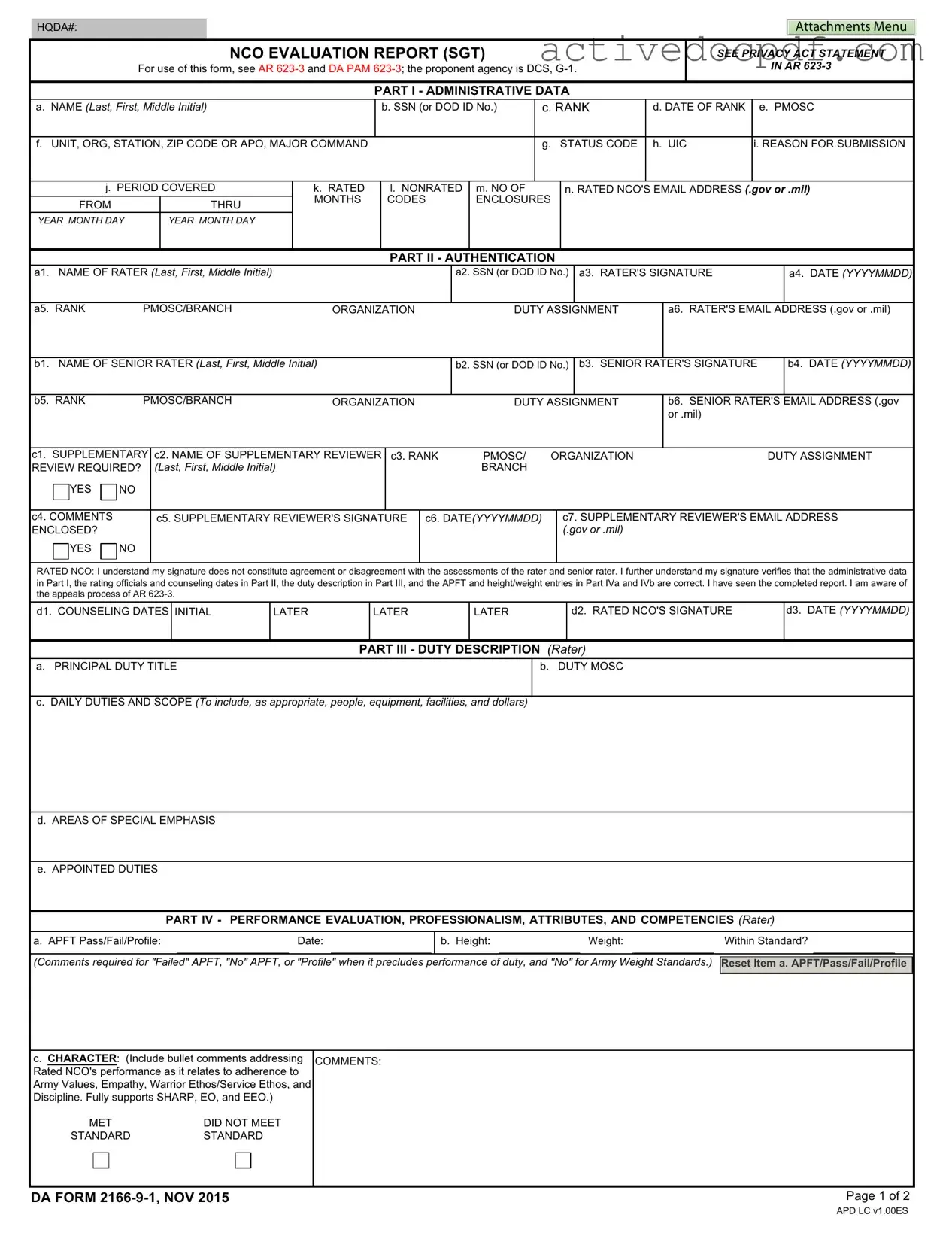The DA 2166-9-1 form serves as an NCO Evaluation Report specifically for Sergeants (SGT). This form is essential for documenting the performance and potential of non-commissioned officers in the U.S. Army. It provides a structured way to evaluate an NCO's duties, accomplishments, and overall effectiveness during a specified period. This evaluation is crucial for career progression and can impact promotions, assignments, and other professional opportunities.
The responsibility for completing the DA 2166-9-1 form primarily falls on the rater, who is typically the immediate supervisor of the NCO being evaluated. The rater must provide detailed assessments of the NCO's performance in various areas, such as leadership, professionalism, and duty execution. Additionally, a senior rater, who holds a higher rank than the rater, reviews and signs the form to validate the evaluation. This two-tiered review process ensures a comprehensive assessment of the NCO's performance.
The form requires several key pieces of information, including:
-
Name and rank of the rated NCO
-
Social Security Number or DOD ID Number
-
Unit and duty assignment details
-
Performance evaluation metrics, including areas like character, presence, intellect, leadership, development, and achievement
-
Signatures and dates from the rater, senior rater, and any supplementary reviewers
Each section of the form is designed to capture specific aspects of the NCO's performance and potential, ensuring a thorough evaluation.
How does the evaluation process work?
The evaluation process begins with the rater assessing the NCO's performance over a specified period. This includes documenting daily duties, special emphasis areas, and overall contributions. After completing the evaluation, the rater signs the form, confirming the accuracy of the information provided. The senior rater then reviews the evaluation, adds their comments, and also signs the form. If necessary, a supplementary reviewer may also provide input. This collaborative approach helps ensure that the evaluation is fair and comprehensive.
What happens if an NCO disagrees with their evaluation?
If an NCO feels that their evaluation does not accurately reflect their performance, they have the right to appeal the assessment. The DA 2166-9-1 form includes a statement indicating that the NCO understands their right to appeal. The appeals process is outlined in Army Regulation 623-3, which provides guidelines on how to formally contest an evaluation. It is important for NCOs to be aware of this process to ensure their performance is accurately represented.
